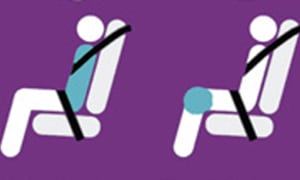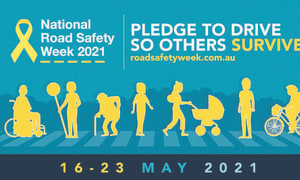
It is crucial drivers understand how to safely load and weigh their caravan and how to drive safely while towing before they set out on the road.

It is crucial drivers understand how to safely load and weigh their caravan and how to drive safely while towing before they set out on the road.
With the upcoming school holidays, and the arrival of spring and warmer weather, many of us are eager to get outside and see other parts of the country. Under the current conditions caravanning is more popular than ever and with some travel restrictions still in place, regional road trips around NSW are expected to be the holiday of choice.
The rise in caravanning holidays has raised safety concerns too. Between 2014 and 2018, there were 239 crashes involving a vehicle towing a caravan on NSW roads. These crashes resulted in 12 fatalities and 120 serious injuries.
Towing a caravan is far more complex than simply hitching one to your vehicle, as it adds significant weight to your vehicle. Anyone planning a road trip is reminded to brush up on essential caravan safety tips before setting out on the road. Caravanning requires careful planning and loading and puts additional responsibilities on a driver to manage safety.
Before you tow a caravan you need to:
- Understand how towing a caravan can affect your driving, your safety and the safety of others on the road.
- Make sure your vehicle’s towing capacity is adequate.
- Ensure you have weighed your caravan and your vehicle, you know your aggregate trailer mass (ATM), gross trailer mass (GTM), gross combined mass (GCM), and you understand how to find and use a weigh station in NSW.
- Correctly load your caravan to meet safety requirements.
- Know the safety checks you should make before and during your trip.
Driving while towing a caravan is a different experience to normal driving; it requires heightened spatial awareness of both your vehicle and caravan, a need for greater stopping distances and careful consideration of environmental factors such as high winds, wet roads and uneven surfaces.
When towing a caravan:
- you need to allow for the extra length and width of your caravan when entering traffic or changing lanes and allow for the extra road space required on corners and curves.
- apply the accelerator, brakes and steering smoothly and gently to avoid sway – particularly in wet or slippery conditions.
- leave a longer stopping distance from the vehicle ahead than when you are not towing a caravan and increase this gap further for longer and heavier caravans. Allow even more distance in poor driving conditions.
- use a lower gear when travelling downhill to maintain vehicle control and reduce the risk of brake failure.
- have someone watch the rear of the caravan from a safe location when reversing– reversing a caravan is difficult and takes practice.
- be aware of the increased effects of cross winds, passing heavy vehicles and uneven road surfaces that can cause your caravan to sway.
Towing a caravan can be more challenging than normal driving and can increase driver fatigue. It is important to make sure you don’t drive when you are tired, and always plan for plenty of rest breaks on your trip.
Making sure you know how to load and weigh your caravan, and safely drive while towing one, can reduce your risk of being involved in a crash. This knowledge will not only protect you and your passengers but complying with safe loading laws means you won’t run the risk of fines from police enforced Roadside Caravan Safety Inspections.
Careful planning and loading combined with responsible driving to manage safety will make caravanning holidays enjoyable for everyone.
For more information on how to safely tow a caravan, including loading and weighing your caravan and a safety checklist for before you travel, please visit the Centre for Road Safety Website: www.roadsafety.transport.nsw.gov.au/stayingsafe/drivers/caravan-safety





